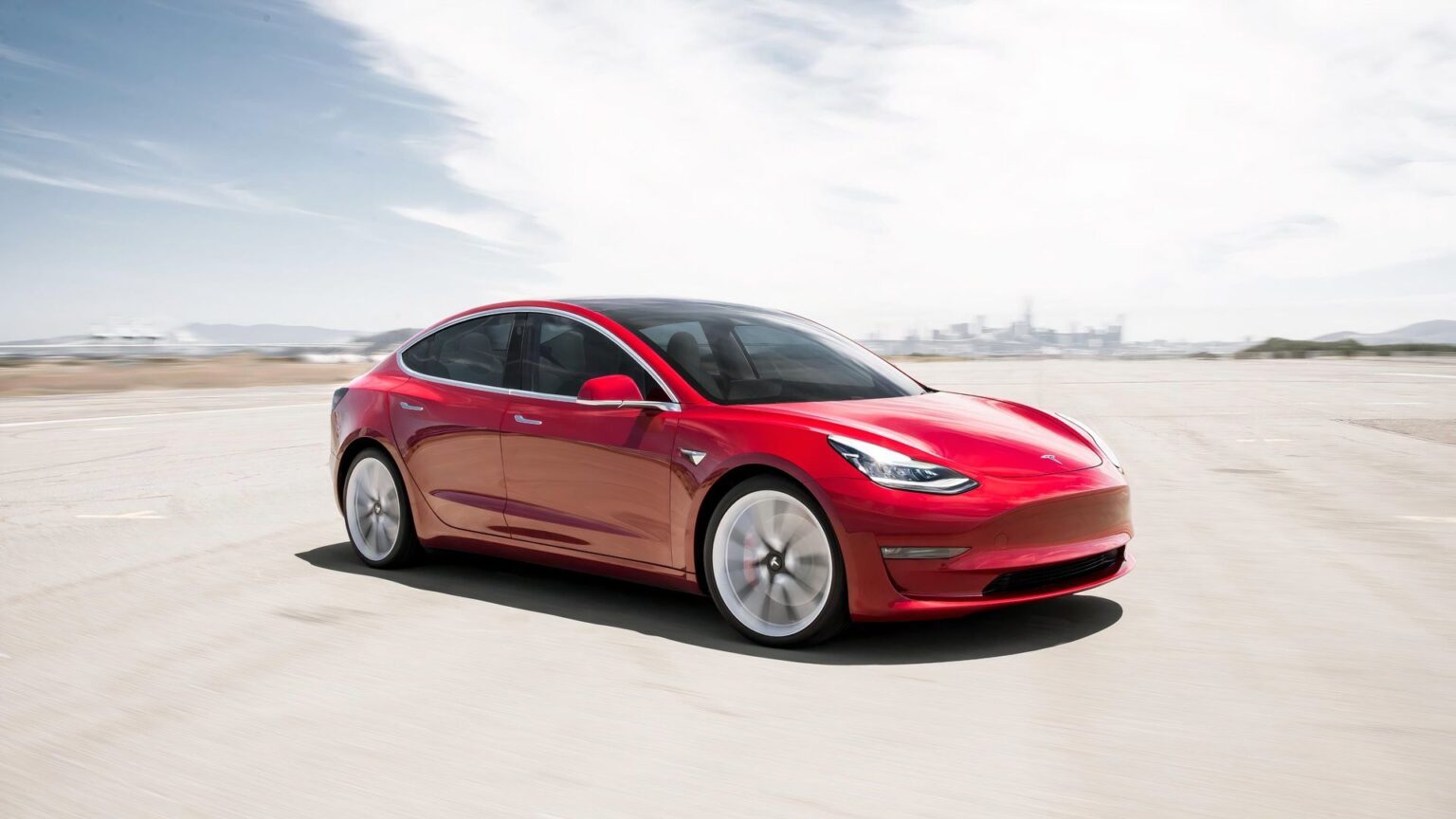You may have noticed that Tesla isn’t doing too well. There are protests against Elon Musk globally; dealers don’t want the Cybertruck, and according to research at CarGurus, that vehicle’s resale falls a whopping 53 percent in just a year. New cars are almost always depreciating assets, but the Cybertruck is a stone tossed into the ocean. And Tesla shares are now trading at half what they were valued at just a few months ago.
Then, there are Donald Trump’s tariffs. These are the opposite of the Cybertruck: They cause inflation. And for EV manufacturers, there’s also been a reaction from China. Last week, Trump placed an additional 34 percent tariff on Chinese imports, which was on top of the 20 percent tariffs already in place.
In response, China retaliated with not only its own 34 percent tariffs on U.S. goods, such as chicken, but also a very precise, very painful controlling measure on rare-earth materials, which are exceptionally important in magnets. And magnets are really how EV motors work, and China controls about 90 percent of all the rare earth minerals in the world. This is very bad for electric vehicles.
Then on Monday, the President threatened yet further tariffs on his social media platform:
“If China does not withdraw its 34% increase above their already long term trading abuses by tomorrow, April 8th, 2025, the United States will impose ADDITIONAL Tariffs on China of 50%, effective April 9th…Additionally, all talks with China concerning their requested meetings with us will be terminated!” — Donald Trump
Here are the ABCs of why rare earth technology is so important to EVs, and how, if they do bite, the tariffs will be a major impediment to future EV production.
Rare Earth 101
You really only need to know about one key ingredient for EV motors: neodymium iron boron (NdFeB). Permanent magnet motors use this element because it’s space-efficient and delivers high performance. The issue really isn’t the element, it’s where it’s from.
China dominates not only the mining of NdFeB, but also the processing. Also, the use of NdFeB is relatively expensive, and permanent magnet motors have drawbacks, too, because they’re very temperature-sensitive and are less efficient at low speeds.
There are new motor designs on the horizon, but it’s not clear if that horizon is getting any closer.
Tesla Wants to Be Different — And So Do GM and Stellantis
A startup called Niron caused a lot of buzz about two years ago when GM and Stellantis announced a $33 million investment in the company’s iron nitride battery technology.
Separately, around the same time, Tesla caused a stir saying they were about to move away from permanent magnet motors using rare earth elements.
Tesla, GM, Stellantis, and probably all carmakers are likely chasing the iron nitride route. It’s a known idea, though according to research experts at a company called ID Tech, even though that kind of motor was used way back in the Chevy Volt, it’s considered relatively heavy and less efficient.
However, the materials can be domestically sourced, and carmakers in Europe, South Korea and Japan also don’t want to be dependent on China. Side note: rare earth mining has proven highly toxic.
Rare Earths From America
Even as GM is exploring using different materials, they’ve invested in rare earth mining domestically. And in January, a firm called MP Materials, which GM has contracted with, began mining NdFeB and will enter production of “… approximately 1,000 metric tons of finished NdFeB magnets per year, with a gradual production ramp beginning in late 2025,” the company said in a press release.
The processing part of this is important, since previously, even if mining wasn’t happening in China, the country has a lock on most production of the magnets and a lot of the motors themselves.
TopSpeed’s Take
It’s not impossible for Tesla and other carmakers to begin shifting away from rare-earth magnet motors toward iron nitride. Reporting in IEEE Spectrum lays out the idea that it will be challenging to shift but that there is promising research.
But in the meantime, tariffs are a major problem for EV manufacturers, not least because in many cases they also depend on China for the magnet motors themselves.
Further, another nation under tariff is Canada, which, according to Newsweek reporting, is also a major resource for rare-earth elements. Whether carmakers want to take the pain of a 54-percent tariff on Chinese products or a 25-percent one on Canadian ones, this will all increase the costs of producing electric cars, whether you’re Tesla or General Motors.
The future of EVs is also under threat from the possibility that the current Congress will rescind the $7,500 tax credit, which itself has built-in incentives for carmakers to re-shore their supply chains, because the Biden Administration saw a threat in critical minerals not being produced domestically.
And, by the way, the defense department, aerospace, and domestic electronic innovation all depend on rare earths. So, oddly, tariffs on China may make sense in this regard, but they’re very damaging in the case of Canada.
Read the full article here


